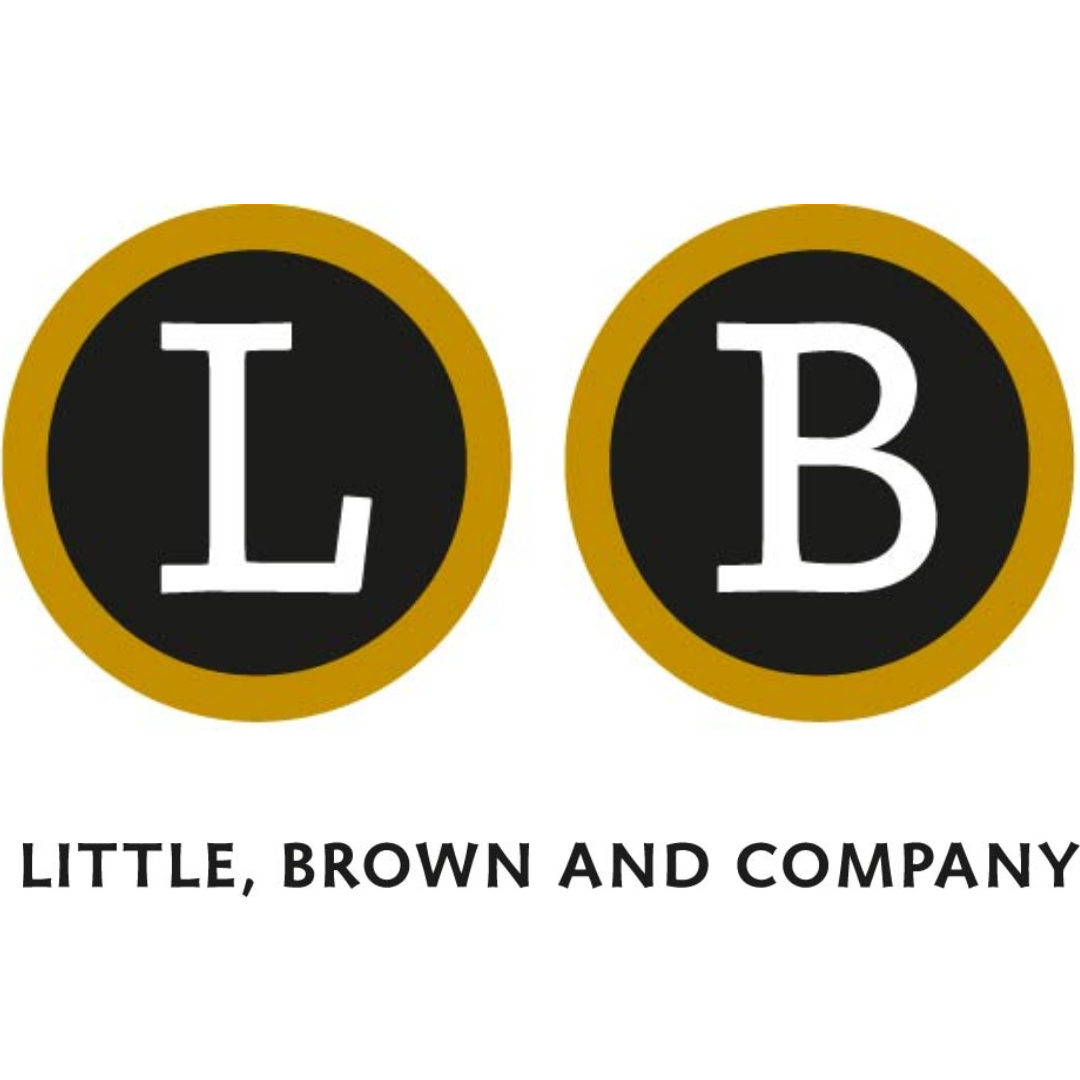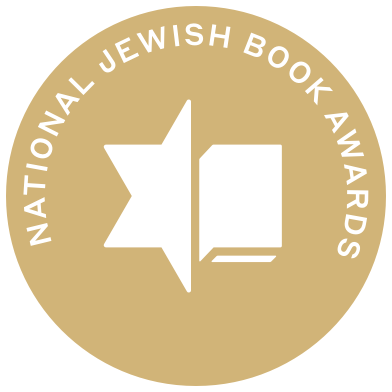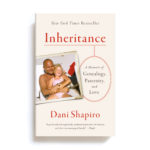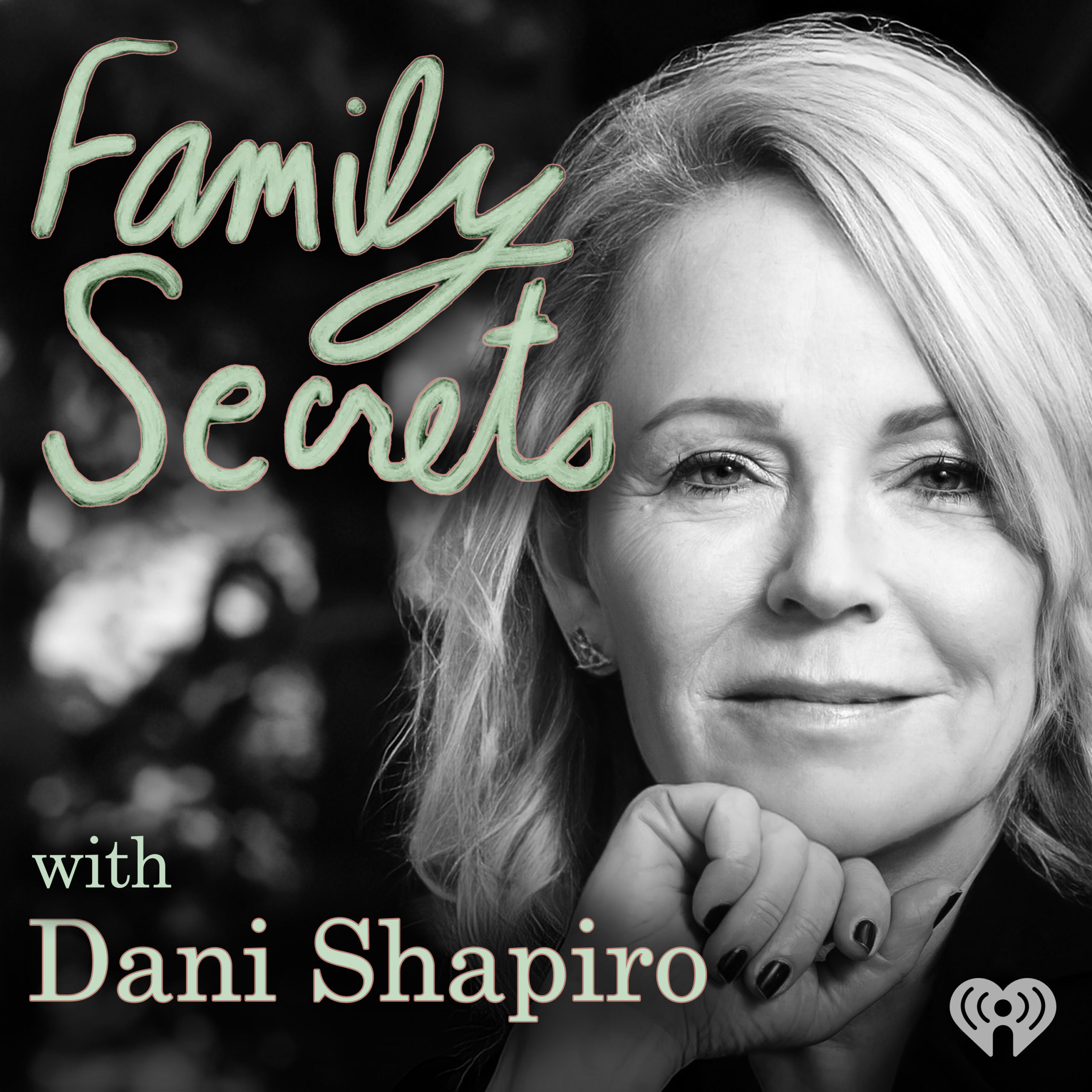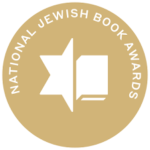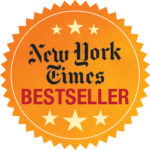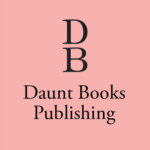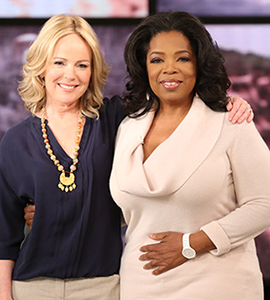On Art and Life
I’ve spent a lot of time, more than I wish, thinking about shoulds and what ifs. Oh, how I wish I could have back all the hours I’ve mused or worried (or panicked) about things that either a) are pointless self-flagellation, or b) uncontrollable.
In the should department, I’ve worried that I should be doing better in virtually every area of my life. I should spend more time working. I should be better at what I do. I should spend more time with my son. I should spend more time with my husband. I should cook more. I should do more yoga. I should meditate more. I should re-do the living room. I should spend more time with my friends. I should take up a hobby. Like knitting. I should knit.
Well, this is funny, even to me. Because notice how each should cancels out the next. There aren’t enough hours in the day. These shoulds do nothing but make me feel scattered, paralyzed, unworthy.
Let’s move on to the what ifs. These are the biggies, of course. What if something terrible happens to someone I love? What if I get sick? What if we have no money? What if I lose my mind and can’t write any more?
This is less funny. Because the truth of life is that something terrible will happen to someone I love. The phone will ring and it will be bad news. At some point. I will get sick. At some point. To love is to risk heartache. To live is to withstand loss. At some point, we all suffer.
I’m well aware that there are people who walk around not thinking about any of this. Usually these are people with regular jobs that don’t involve sitting around in ratty yoga clothes or (truth) a bathrobe in the middle of the day, staring at the walls, or pacing the floor. John Updike called writing “the subtlest instrument for self-examination known to man.” That self-examination, combined with the capacity and willingness to witness the world around us, is not a comfortable place to be. We writers often feel raw and exposed, out-of-step. I myself am often struck mute – as if I can only figure out what the hell I want to say when I’m in the process of putting pen to paper. This isn’t a choice – its a way of being. Nobody becomes a writer who doesn’t have to.
If we are our only instrument – as of course, we are – how do we navigate this business of living our lives, quieting the shoulds and what ifs, and finding that inward space in which we’re able to find that truth, as Thoreau wrote, that strikes us from behind and in the dark?
I’m going to suggest something radical here – something that is much easier said than done. We must not separate our life from our art. Louise Gluck recently spoke of this in an interview with William Giraldi in Poets & Writers: “You have to live your life if you’re going to do original work. Your work will come out of an authentic life, and if you suppress all of your most passionate impulses in the service of an art that has not yet declared itself, you’re making a terrible mistake.”
I’m often asked about motherhood and writing. About teaching and writing. About making a living and writing. Beneath all of the questions is a deeper question, thrumming: Can I have a life and be a writer?
I’d like to answer a resounding yes to that question, though with the caveat that this requires a daily practice, a daily awareness that perhaps we need not delineate between life and art, draw a line down the center of our days and put our work on one side and everything else on the other. Sarah Ruhl offers this: “I found that life intruding on writing was, in fact, life. And that, tempting as it may be for a writer who is also a parent, one must not think of life as an intrusion. At the end of the day, writing has very little to do with writing, and much to do with life. And life, by definition, is not an intrusion.”
And so, my friends, embrace the snow day, the traffic jam. Embrace the flu. Say thank you to the midday school conference, the vet appointment, the plumber, the memorial service. As I said, easier said than done. But it helps to remember that every single moment you wholeheartedly experience becomes part of your instrument, part of what you know.
On the Path of Possibility
I’ve been thinking lately about what it means to put ourselves in the path of possibility. We’re always either moving towards possibility, or away from it. I’ve come to envision this as a stream – clear, blue, lucid, always flowing. We know when we’re in that stream – and we know when we’re not. When we’re off course, life feels like a slog. We’re impatient, accident-prone, frustrated. Nothing seems to work out. We don’t know why, and we blame ourselves, or everyone else, for our woes. But when we’re in the path of possibility, everything feels suddenly slightly…easier. Coincidences abound. Strange, serendipitous encounters. Overheard conversations. Signs and wonders. My friend Sylvia Boorstein tells me the Buddhists call this the effortless effort. The effortless effort is unmistakable. Those of us who are writers feel it when we’re deep in the work and the world falls away. It’s a hard, hard place to get to, and once we’re there, we want to find a way to stay there forever.
My husband and I have spent the last couple of weeks in LA. In fact, I’m writing this from the middle seat of a bumpy Jet Blue flight on our way home. My husband is a screenwriter / filmmaker and we made the decision years ago to not to move to LA, which is a bit like an astronaut making the decision to not board the space shuttle. My husband has gotten work, because he’s really good at what he does, but he has most definitely not been in the path of possibility. He’s been a lone wolf on top of a hill in Connecticut. He hasn’t been running into studio executives at cocktail parties, or in line to pick up coffee at Intelligentsia, or at the gym. Example: last week, we were waiting for friends at a bar in West Hollywood when two gentlemen offered to buy us a drink. Out of nowhere. Like, totally random.
“What brings you here? What do you do?” My husband asked one of them.
“I have a fund and I invest in independent film,” he replied. “And you?”
“I make independent films. And I’m looking for investors.”
That kind of thing doesn’t happen in Connecticut.
Again and again, the universe shouted, hello! hello, are you getting the drift?
We were getting the drift.
I am always aware of cultivating a witness consciousness. I want to be awake to my life. Awake to my family’s life. To the lives of all those I love. To the world around me in all its wounded splendor. If I am wide awake – not anxious, not fearful, not hesitant, not impulsive – through my open eyes I begin to see the paths of possibility, almost as if they were outlined in neon. It’s hard work – paradoxically – to reach that place of effortless effort. It requires discernment, and a willingness to take risks. To leap, with no safety net. To say, yes, we are grown-ups with grown-up lives and responsibilities. But we are also willing to shift and change in order to align ourselves with what the path presents. Shoulds are deadening. Shoulds put us in a box and close the lid.
This week I spent time with a remarkable array of people – friends, old and new. One in particular is relevant to this essay, a woman who’d had a big, glamorous job in the fashion world, and one day she was in her car, stuck in traffic (this being LA) and she realized she was done. She no longer wanted to do that kind of work. And in the space that suddenly opened up in her head where all that noise had been, she came up with a brilliant business idea. She didn’t stop herself. She didn’t listen to the shoulds. She detected that gleam of light that flashed across her own mind – as Emerson writes about in “On Self-Reliance”– and didn’t dismiss the thought because it was hers. In fact, she ran with it. And the path unfurled before her.
It’s a little early for New Year’s resolutions, but chief among mine is to continue to seek out that effortless effort, to do the hard work of finding the path of possibility. Whether we stumble upon it or tirelessly search for it, when we arrive there, it’s unmistakeable. The signs and wonders light the way.
Not If, But When
This morning the dogs woke me at the same ungodly hour they always do, despite having turned back the clocks last night. They apparently can’t tell time. My husband is away at a film festival. My son is away at school. So alone, in my big fluffy white bathrobe, I trudged downstairs and out into the pale flush of dawn. My slippers slapped against the cold stone steps. A brisk November wind whistled through the creaky tree branches as the last of the autumn leaves skittered across the driveway.
Not if, but when. The words moved swiftly through my mind, leaving their trace. Not if, but when.
I’ve always known this, of course. We all do. We live our lives either running in terror from this reality, or embracing it. I’m not sure there’s a third option, a place of neutrality. How can we be neutral about the idea that our days are numbered? That time moves doggedly, persistently, inevitably forward, and we are nothing more than those leaves on the branches of trees? We are buds, if we’re lucky we bloom, we flower, we are affected by the weather –– the hailstorms of life –– and again, if we’re lucky, we turn rich and magnificent colors, we cling to the branches, we fall, oh how we fall, gracefully, or perhaps not-so-gracefully, through the air. We dance roughly along roads, sink into gutters, are ground into nothing as the stillness of snow blankets us –– until we are no longer us. We are the very earth that cultivates whatever comes next.
Have you stopped reading by now? I don’t mean to seem melancholy. I don’t feel melancholy. I used to run in terror. When I was a young woman (and oh, even that is a phrase that is hard to leave on the page) I lived in fear of the other shoe dropping. I worried about my own health, the health of those I loved. I couldn’t deal with the idea of impermanence. Those years were a howl for me. I railed against my own deep, mute knowledge that I, and everything I loved, was at the mercy of time. And time bore this out. My life closed twice before its close, wrote Emily Dickinson. To live is to lose. To love is to have our hearts broken. We know this. We know this –– and yet.
Not if, but when.
On the bulletin board above my desk, I keep postcard, sent to me by a friend, that shows a half-dozen Tibetan monks dressed in saffron robes, on the steep decline of a roller coaster ride. Their hands are flung up in the air, these monks, and they are laughing, rapturous. Oh life! Oh speed! Oh the joy of this one, precious moment!
There’s a difference between neutrality and equanimity, I think. Neutrality is a dulled and dull way of living. I mean, who wants to be Switzerland? But equanimity is an intentional, disciplined way of being. When I remember that this one day, this precise second –– the dogs snoring at my feet, the branch scraping against the window, geese honking in the distance, my beloved husband on the others side of the country on his way to show his film, my son, light of my life, an hour north of me at his lovely school, me, about to head out the door to a yoga class, writers – twenty of them – flying to New England from all over the world to take part in a retreat I’ll be teaching with a dear friend, but see… see how I’ve gotten ahead of myself?
Not if, but when.
So all there is to do, right at this very moment, is breathe in, breathe out, and kiss the joy as it flies.
On Raising Hands
Last weekend I spent a couple of days at my son’s school, in that annual autumn rite-of-passage in which parents sit in on their kids’ classes, talk to their teachers, and generally get a mini-immersion in their lives. As I sat in on geometry and physics classes, I began to notice that the same small group of kids raised their hands. Every time the teacher posed a question… whoosh! Up went the hand of the boy who sat third from the left, the two girls on the other side of the table. The teacher would ask for a volunteer and…whoosh! The same boy, the same girls. The teacher would try to wait it out, not make eye contact, hoping that, with time, another hand or two might go up. But no. Some kids kept their heads down and looked bored. Other kids (like mine, for instance) didn’t want to risk giving a wrong answer. Still other kids covertly played World of Warcraft on their laptops. It brought me back to my own high school and even college days with a shock of recognition.
My boy is not from the hand-raisers. My husband wasn’t a hand-raiser. I wasn’t a hand-raiser. As I watched, I found myself thinking that you could probably divide humanity into those who shoot their hands up into the air – who believe in themselves and their right to voice an opinion – and those who don’t. But what does this mean? Especially once we’re out of the academic classroom, and exist in that much larger classroom otherwise known as adult life?
I know why I never raised my hand in school. I was shy, and risk-adverse. I was afraid of embarrassment. Afraid of my own mind. I didn’t trust myself. I didn’t trust my instincts, my intuition, my intellect. I’ve daydreamed about going back to interview my old teachers — from grade school, high school, college. I wonder whether they’d remember me, and if they did, whether they could have imagined that the blurry blonde girl in the back row would grow into a woman who has a voice in the world. As I write these words, I am amazed by the truth of them. Because that blurry blonde girl still lives inside me. Everything I am, I am because of her, and in spite of her. She hovers in the background, panicky and fearful. She doesn’t believe in her own voice. She hardly even believes she has a right to exist. And yet, something larger than that girl, something more capacious and essential has managed to win out, over the fear. It wins each time I sit down to write. It wins when I get up in front of an audience, or a classroom, and tell it like it is. It wins when I take care of myself and my family. When I unroll my yoga mat. When I meditate.
Our sense of ourselves is formed from an early age — or perhaps being a hand-raiser is a genetic trait, like blue eyes, or long toes. Certainly the way we’re perceived and treated as children has a lot to do with it. And though this is the beginning of the story, it certainly isn’t the end. Next month, I’ll be leading one of my bi-annual retreats at Kripalu, and when the group assembles that first night, I will begin the way I always begin, with every single person in that room, no matter how many are there, speaking one word aloud. I do this because I know how important it is to hear our own voices. To be part of something larger than ourselves. To take a deep breath, a flying leap. To feel worthy. I know this because I live it. I have conversations with that blurry girl every single day. Raise your hand, I tell her. Be brave.
On the Right Book at the Right Time
Last winter, when I was in Seattle for a conference, I spent time in one of the great indie bookstores. Whenever I’m in a city I don’t know well – and if I’m in a semi-balanced state of being – I remind myself that I become grounded and less weirded-out by travel if I a) take a yoga class, and b) seek out a special bookstore. So I was wandering the aisles of the bookstore when a particular book caught my eye. It was written by Anne Truitt, a sculptor with whom I had crossed paths when both of us were at Yaddo in the mid-1990’s. At the time, I was young – though I didn’t believe myself to be – and I was writing the second chapter of Slow Motion, while also being very social, and single, and careening around Saratoga Springs with some of the other equally young, energetic, and hopeful artists who were in residence. Still, Anne Truitt, who was well into her seventies, made a lasting impression. She seemed, to me, formidable, contained, dignified, disciplined, and I remember that her eyes were both warm and wise. She kept to herself. She wafted into dinner, then went back to her studio straightaway. She seemed at home at the venerable artists’ colony, where I – still in the early years of my life as an artist – felt like an interloper, lucky to be chosen, as if somehow I had slipped through the gates of Yaddo, unnoticed and undeserving.
The sculptor’s warm and wise eyes gazed at me from the book’s cover, that afternoon in Seattle. I bought her book impulsively – I was, in fact, in the midst of a self-imposed moratorium on adding more to my to-be-read pile – and brought it home with me, where it sat buried in a small stack on the desk in my study, obscured by other books I needed to get to, piles of papers that either were, or seemed, urgent.
Months went by.
Last week, I cleaned off my desk. I always think of September as back-to-school time, not only for my son, but for myself. And there she was, once again, gazing up at me. She seemed to be following me around. So I began to read her, with shock after shock of recognition. She died a decade ago, but I felt as if she was in the room with me. I have spent the last week communing with a woman I never knew, across time and space. She has joined the short list of women throughout centuries who I feel are kindred spirits, guides to this perplexed, middle-aged writer. As I navigate motherhood, marriage, community, the passage of time, the financial instability of the artist’s life, the conundrum of the heart and the head, domesticity and creative ambition, as I grapple with my own history and its scars, my wounds-cum-obsessions, it feels like no less then the hand of grace – by which I mean, the hand of another reaching across the impossible – that makes my pulse quicken, my heart soar, and that feeling, once expressed so beautifully by Jane Kenyon, that others have walked this path before me. Me too, Jane Kenyon once wrote. I’ve been there too.
In exploring in her journal what constitutes making art, Truitt writes: “What did I know, I asked myself. What did I love? What was it that means the very most to me inside my very own self?”
So simple, no? What do we know? What do we love? What resides inside our innermost beings?
And this: “It takes kindness to forgive oneself for one’s life.”
As artists – hell, as human beings – if we are lucky enough to endure, with that endurance we have the option of hardening or softening. Of residing in judgement or embracing curiosity. Of diminishing or growing. Each and every moment, we are moving in one direction or the other. It takes a while – perhaps a lifetime – to begin to understand how any of it makes sense. But every once in a great while, the tapestry grows stronger. Threads wind together. A visit to a bookstore on a rainy day in the Pacific Northwest led me to a new and very dear friend and mentor. I will never have tea with her. We will not sit together in her garden. But I love her nonetheless. She is lighting the way.
On the Private Heart
It has felt lately – to me, to just about everyone I talk with – that there is a tremendous, perhaps even unusual amount of pain in the world, that our very planet is shaking with sorrow. The headlines are filled with tragedy on a mass scale, and this mass scale translates into individual losses, individual grief. How do we hold it all? In the past month, I have watched helplessly while several friends have been diagnosed with serious illnesses. Long-time marriages have hit the skids. A family we know suffered a terrible, traumatic accident. At the same time, we have laughed. We have spread a cloth over a picnic table and grilled dinner on the shore of a beautiful lake, marveled at a glorious sunset. I have held my boy and my man close. I have taught workshops in which the work is filled with trauma, and yet we are able to laugh to the point of tears. I have feared, and I have loved. And as artists, what do we do with what we’ve been given? What, when we sit – as I do right now – in our solitary rooms, with nothing more to guide us than our own consciousness, our own private hearts?
Here I am. On my chaise. In my quiet house in the country. My son is still asleep (oh, for the sleep of a fifteen year old boy!) in his room next door. My husband is downstairs, revising his new script. The house smells of eggs and toast. The dogs are crashed on the floor next to me. I am surrounded by books I’m reading, or hope to read. My second cappuccino has grown cold by my side. This is how I begin this day. In my big, fluffy white bathrobe and warm slippers. A life of relative comfort and ease. A life filled with love. A modicum of safety. A life of someone who has survived thus far, who has the battle scars and wounds to show for it, but has found a way to deal with those battle scars and wounds. (It has been years since my question, in therapy, morphed from “Am I okay?” to “Why am I okay?” – the knowledge of my own sanity finally beyond question.) So why, then, am I on the verge of tears as I write these words? This seems to be true of me on most days – my private heart brimming, the sheer teeming randomness of humanity pressing in on me, the stories, the stories, surrounding me, whispering, moaning, shouting, wordless, asking to be given form?
“What do I mean by ‘private heart’?” Cynthia Ozick asks during an interview. “It’s probably impossible to define, but it’s not what the writer does – breakfast, schedule, social outings – but what the writer is. The secret, contemplative self. An inner recess wherein insights occur.”
All I know is this, and it’s both nothing and everything. I am most myself when I am closest to this private heart. It’s easy – so easy – to run away. To get busy, make plans, say yes to dinner, to drinks, to traveling to some far-flung destination. To go online. Check email. Pour a cocktail. To succumb to the headlines, the tragedies both public and private. Wouldn’t it be simpler not to feel the whole human catastrophe? Well, yes and no. And a moot point, because the artist has no choice. We can run, but we can’t hide. All the while, our secret, contemplative self – that inner recess – is waiting. It aches to feel it all. The sorrows of this shaking planet, the beauty of this human body, the randomness and the grace that are visited upon us each and every day.
On Getting to Work
I’m writing this from a friend’s borrowed apartment in New York City. Sun streams in through the east-facing windows. The air-conditioner hums. Outside, a bus sighs — that’s how it has always sounded to me, like a long, exhausted exhale — four floors below, on Columbus Avenue. I have a few hours until my lunch date. I’m showered. Caffeinated. Alone. And… why is it so hard to get to work? The world out there is noisy, but the world inside my head is even noisier. I could blame over-stimulation from all the travel, teaching, and public speaking. I could blame my husband or my kid. I could blame my in box, flooding with things I need to take care of, or feel guilty for not taking care of.
Or I could blame myself. That’s what I tend to do. It’s what most of us usually do, isn’t it? Out comes the whip. We’re lazy, stuck, worthless. Our ideas are shallow, uninteresting, tepid. What’s our problem? Why can’t we just crank out pages like some literary version of a well-oiled machine?
I’ll tell you why not. Because this writing thing is hard. It always feels good to have written, but it rarely feels good to sit down to write. If I were to describe my own physical process, it’s like a nearly-unbearable tension within me slowly begins to rise. A welling up of so many thoughts and feelings that it feels I might explode. And yet, at the same time, there is the seeming impossibility of finding the words, of knowing what’s next, of getting it right. Shoulders tense. Jaw tightens. Eyes sting. Breath becomes shallow. Mind buzzes in circles endlessly. The page is a solid wall at which I must run, full tilt, and only by running, only by hurling myself straight at it might it crumble and give way. But it appears so solid! So unforgiving! Sometime I bang against it, and limp away, bruised and bloody. Other times, it turns out the wall was just a mirage. But there’s only one way to find out.
So. How to begin? Improbably enough, we must begin with kindness. What do we need right now? What do you need? Another cup of coffee? A few moments of meditation? A deep, cleansing breath? A shot of courage? A reminder that everyone who is sitting alone in her room, right at this very moment, is on some continuum of this very same process? We are all alone. And we are also all in this together.
On your marks. Get set. Go.
On the Last Two Steps
Right around New Year’s, when the world seems replete with actionable plans – you know, seven steps to greater happiness, ten steps to a new you, and so forth – I found myself musing about whether there are indeed identifiable steps, or any steps at all, that lead to the creation of a new piece of work. Are there steps that lead the writer to the page? Steps that we can take, teetering one after the next, that will somehow get us into that longed-for state of the page rising up, the world receding?
I’m sorry to say that after all my musing I was unable to come up with a game plan, for myself or anyone else. Honestly, I never really thought I would, because every writer’s path to the page is unique and fraught in its own special way. However, I did land on one idea, which has to do with the second to the last step – the penultimate step – to beginning a new piece of work.
Are you ready for it?
Despair.
Yes, you read that right. I can only speak from my own experience, but I’ve had quite a lot of it at this point, and what I can identify in my own process, when I am between books, it that I have to reach a total nadir, a writhing-on-the-floor, no holds barred, messy, deeply uncomfortable, godawful, pressured, horrible state before I can begin. No, I’ll take that further. It is precisely the depths themselves that act as a launching point. When I find myself – finally, inexorably – trapped in that impossible place, I am finally liberated. Liberated from my perfectionism, my resistance, my inner censor. Liberated from my fear, my self-consciousness, my ambition, my desire. All that’s left, in my despair, is an empty husk. And from that empty husk issues forth this question:
What do you have to lose?
When we land in the place beyond fear which is, if you’ll excuse me, a fuck-it-all place where courage is beside the point, this is the final step that hurls us at the page. A dear friend, a wonderful writer whose father is also an eminent writer – a national treasure – told me that when she was a child, her father used to drive her to school during the years in which he was wrestling with what later became his magnum opus. On some mornings, he’d pull the car over to the side of the road and she’d watch as he’d bash his head against the steering wheel. I asked her if it felt scary, and she told me it didn’t. It was just her dad, trying to get to work. I know the feeling of that pressure building up. Bash, bash, bash! I’ve certainly screamed in my car at the top of my lungs – though I’ve managed never to do it in front of my son. A writer in that state of struggle is a bit mad. My head sometimes feels like an overripe melon, rotting, ready to explode.
But here’s the thing: there seems to be no other way. We don’t choose this life. This life chooses us. And so from the ocean floor of that despair, we tense our legs, we spring from our haunches, we squeeze our eyes shut and scissor up through the depths with all our might. We don’t think about whether we have enough time or oxygen. We hope there’s light above us. We break through the surface, gasping. We’ve survived the worst part. From the deepest recesses of where we have found ourselves, we have begun.
On Slowness
These days it seems I have forgotten what it is to slow down. Isn’t this true of many of us? It’s so easy, in this ridiculously fast-paced, high intensity, noisy, noisy world we live in, to lose all sense of stillness. Stillness, slowness, being of course the life’s blood of the writer. My life can look, from a distance, like it is replete with stillness. Take this moment, for example. It’s almost five o’clock in the afternoon and I haven’t left the house, except to take the dogs out. I’ve never gotten dressed. I’ve gone from yoga clothes (not that I did yoga) to a bathrobe. I’ve puttered around in an efficient manner, making my favorite new loaf of bread, and my favorite green juice. I’ve hung out with my teenaged son, who is home from school and ever-so-slightly bored. I booked a trip to Chicago to visit my ninety-year-old aunt in a few weeks. You might even say I’ve done a pretty good impersonation of stillness. But in between all this, I either answered or sent — I’m actually going to count right now — I answered or sent fifty-one emails. I looked up dozens of articles online that caught my attention on Twitter. I tweeted twice, retweeted six times. I favorited quite a few tweets. By the way, the spell check on my computer doesn’t even recognize these as words – retweet, favorited – but here I am, using them. To decompress, I took a bath. Hence the bathrobe. But mostly, I’ve spent most of the day trapped in my head, thoughts bouncing one into the next like so many marbles dropped from a paper bag onto a hard floor.
What next? The thoughts all whisper, an endless drone. What next, what next, what next?
Yesterday, while driving the country roads near my house (yesterday being a day I did actually leave home) I listened to a beautiful audiobook by Pema Chodron, which contained these words: Trying to find the moment when one thought becomes another is like trying to find the moment when boiling water turns into steam. When the mind is noisy, when the speed of life seems to be a river and myself the unmanned raft, this is just how my thoughts appear: random, formless, useless, inaccessible.
What next?
This past weekend I taught a workshop at Kripalu with the yogi and scholar Stephen Cope. Titled Writing Through the Chakras, the workshop was – if I do say so myself – quite extraordinary. Most everyone who came left feeling blissed-out. Steve led the yoga, and I led the writing, and we moved the eighty students in that great hall from states of repose and receptivity (slowness!) directly into the experience of moving the pen across the page.
I have become a master of helping writers get out of their own way. But the momentary irony is that I have been so busy doing this that I have lost the ability to get out of my own.
What next?
Someone wiser than I would counsel me that I can’t possibly know right now. That I need to take some time. Since October, I have appeared on Oprah, been to San Francisco twice, Seattle twice, Aspen, Florida three times, New Orleans. I have given speeches in front of thousands of people, or hundreds, or a few dozen. I have taught private workshops, small retreats, big retreats, on both sides of the Atlantic. Someone out there reading this is going to think that this is a humble brag. But it’s not. It’s just a fact of my life that I’m trying to learn how to make jive with the rest of my life, which is that of a solitary, introverted writer who needs to the time and space and wherewithal to once again discover the world anew. To breathe, to think, to walk, to remain in my bathrobe, to take baths. To shut off the email. To take a holiday from the Internet. To stop considering who the world is telling me I am (to the degree the world cares, which is to say, perhaps a hairsbreadth more than a rat’s ass) and instead, consider that somewhere deep in the recesses of my being, stories are growing in the dark.
On Collaborating With Chance
Anyone who has heard me speak or been in one of my recent classes knows that I have a new literary crush, the amazing writer Rebecca Solnit. I have been reading Solnit’s work slowly, savoring her sentences, the nimbleness and depth of her mind, the generosity of her spirit, her disciplined eloquence. This particular morning, I am staying in a friend’s New York City apartment, lying in an enormous bed from which, through a picture window, I can see all of Central Park spread out thirty floors beneath me. Fifth Avenue and Central Park West line either side of this vast, improbable expanse of green, buildings small as Lego’s. I skipped yoga class this morning and instead, in this gloriously empty apartment, communed with Solnit. Here is a passage that inspired me — as she does, often — to dig deep into my own consciousness:
“Edgar Allen Poe declared, ‘All experience, in matters of philosophical discovery, teaches us that, in such discovery, it is the unforeseen upon which we must calculate most largely.’ Poe is consciously juxtaposing the word ‘calculate,’ which implies a cold counting up of the facts or measurements, with ‘the unforeseen,’ that which cannot be measured or counted, only anticipated. How do you calculate upon the unforeseen? It seems to be an art of recognizing the role of the unforeseen, of keeping your balance amid surprises, of collaborating with chance, of recognizing that there are some essential mysteries in the world and thereby a limit to calculation, to plan, to control. To calculate upon the unforeseen is perhaps exactly the paradoxical operation that life most requires of us.”
This passage stunned me, absolutely took my breath away. It speaks so succinctly to everything I have come to understand about how to live — how to attempt to navigate the great tapestry of this human condition, this glorious, catastrophic existence. How to ride the wave with an open heart and an open mind, holding the awareness that it is the wave carrying us, not the other way around. We are at the mercy of its whims. But when we know this, we relax. Our fists unclench. Our lungs expand. When we release to this idea — when we collaborate with chance — we are more likely to stay upright, to maintain our balance, come what may.
My life has lately been taking me in directions I never could have imagined, and this has happened by my releasing myself, in Solnit’s words, to the essential mysteries of the world. None of this has been according to plan, or by design. I have traveled an enormous amount in these last years, speaking about Still Writing and Devotion, teaching at retreats around the world. I spent an hour being interviewed by Oprah. I gave a lecture in New York last month in front of thousands — something I could never have imagined just a few years ago, when I was crippled by stage fright. Over the past three years, I have watched as my husband took a massive risk — an all-or-nothing roll of the dice — by putting his career as a Hollywood screenwriter on ice in order to make an independent film. Something deep in my gut told me that he was doing exactly the right thing, just what he needed to do, even though it was scary. Even though there were many nights I laid awake at three o’clock in the morning, staring at the ceiling, imaging myself as a bag lady. That movie — three years in the making — is opening this weekend in New York City. Our collaboration with chance.
I am well aware that this collaboration with chance is, at this precise moment, one of good fortune. That there will be those who think, well that’s easy for her to say. But I also know that this collaboration with chance has brought with it, over the course of my life, grief and fear and pain. And, without a doubt, it will again. One of the greatest lessons I’ve learned over the past few years is that risk actually means risk. Real risk. Not pseudo-risk with a safety net. This is — all of it — a high wire act. There are many moments, daily, hourly, where the willingness to fail, to fall, is the only way to move forward. But move forward, we must. From the window, I see tens of thousands of abodes. Cyclists and runners in the park. Glorious, teeming humanity. Bravely, skillfully, with grace and fortitude, calculating on the unforeseen.






